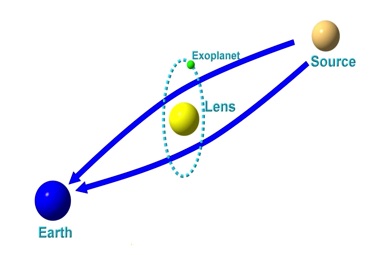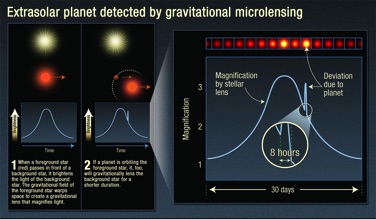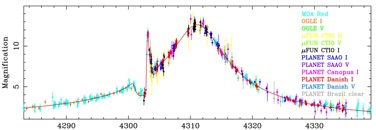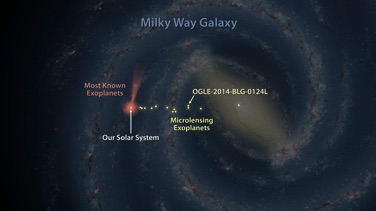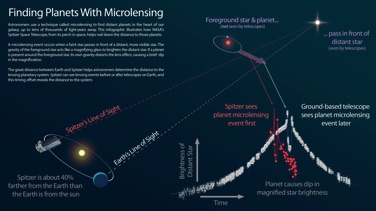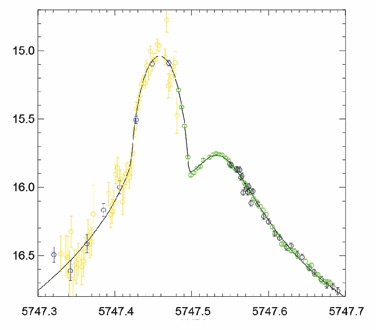Another indirect method for detecting exoplanets is known as gravitational microlensing. This method depends on the observer and two distant stars being in close alignment with one another. Light from the background star is bent by the curvature of space around the foreground star. This results in the foreground star acting as a sort of magnifying glass for the distant star. The foreground star is typically called the lens star in such an arrangement. An exoplanet orbiting a lens star can also act as a small gravitational lens. The effect of the small second gravitational lens from the exoplanet produces a small spike in the light from the original star. It is the presence of this small spike that alerts astronomers to the presence of an exoplanet.
The exoplanet highlighted in the main view panel, OGLE 2007-BLG-368L b, was discovered in 2009 by the gravitational microlensing method. OGLE 2007-BLG-368L b is a cold exoplanet (approximately 22 times the mass of Earth) that is located at a distance of 3.3 AUs from its central star OGLE 2007-BLG-368L. The gravitational microlensing of OGLE 2007-BLG-368L b was observed at the Las Campanas Observatory in the Atacama Desert in Chile.
NASA’s Spitzer Space Telescope has recently made use of the gravitational microlensing method to discover OGLE 2014-BLG-0124L b, one of the most distant exoplanets known. OGLE 2014-BLG-0124L b was discovered in 2015 and is located approximately 13,000 light-years from Earth. OGLE 2014-BLG-0124L b is a gas giant that has a mass roughly equal to one-half that of Jupiter.
The Most Distant Exoplanet
MOA 2011-BLG-293L b is the most distant exoplanet discovered so far. It is located in the center of our galaxy at a distance of 25,000 light-years from our Sun. MOA 2011-BLG-293L b was discovered in 2012 by the gravitational microlensing method.
